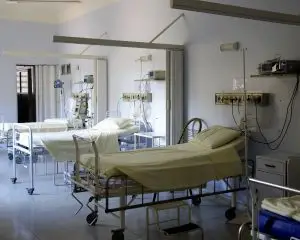Hospital-acquired infections (HAIs) are those that are contracted by a person while in the hospital. HAIs occur either from a patient to another patient or from a patient to a non-patient accompanying him/her. The probability of HAI transmissions becomes negligible when hospitals are decontaminated with effective disinfection methods at required and regular intervals.
Research on HAIs & Their Complications
A 2015 study published in the Journal of Bone and Joint Surgery investigated the potential of cell phones in the orthopedic operating room to carry bacterial contamination. The study analyzed the cell phones of 53 orthopedic surgeons and residents. The startling results included,
- Based on relative light units, 98% of the cell phones seemed unclean
- 83% of the cell phones carried harmful bacteria
- Even after disinfection, 8% of the cell phones still carried the pathogenic bacteria
- The presence of pathogenic bacteria, namely Staphylococcus aureus, and Coagulase-negative staphylococci
- The presence of non-pathogenic bacteria, namely Bacillus, Lactobacillus, and Micrococcus species
Practical Implications
Have you ever imagined the number of objects used in a surgical or operating room? From surgical instruments to PPEs to personal items, there are hundreds of objects. This indicates the possibility of all these items getting contaminated. When other patients contract these contaminated surfaces, diseases spread. When an object does this transmission, think of a person working in the room. From surgeons to nurses to other doctors, all the staff can spread HAIs, acting as a transmitter. Proper disinfection of the surface objects and the personal sanitization after every surgery or an operation can help hospitals overcome this complexity.
Effective UVC chambers can be installed at nursing stations, operating rooms, entry and exit points, and patient rooms to disinfect the used objects. Patient gel pads, glasses, stethoscopes, pens, cell phones, blood pressure cuffs, keys, pagers, and many more surface objects could get disinfected this way. Reflective surfaces in a UVC chamber can help disinfect the objects completely.
Pulsed Xenon UVC Light Disinfection
Pulsed xenon UVC light has strong germicidal properties as the light’s wavelength extends between the germicidal spectrums of 200-320 nm. When pathogenic microorganisms get exposed to this germicidal pulsed xenon UVC light, it breaks the microbe’s proliferation chain and hinders their multiplication.
Based on the evidence from the study that assesses the use of portable UVC light for surface disinfection to prevent the HAIs, pulsed xenon UVC surface disinfection significantly reduces the HAIs and VREs.
Currently, many hospitals across countries have adopted commercial UVC robots and UVC sanitizing chambers to disinfect the intensive care (ICU), oncology units, and operating rooms.
Industry’s Best and Tested PXL Chamber
The UVC PXL chamber is independently tested against various pathogenic infections. The results prove the effectiveness of pulsed UVC light from the PXL’s UVC chamber, showing a significant reduction in the CFU counts. The UVC chamber perfectly decontaminates microbial colonies. It has become the most preferred method owing to its easy operation, safety, and affordability. Let your hospital get devoid of HAIs by installing the industry-standard PXL UVC chamber
Tzachi Sabati
CEO, IZAK Scientific
Physicist specializing in photonics and quantum technologies, with deep expertise in quantum sensors and advanced optical systems. Leads the Advanced Quantum Lab course at the Technion, bridging academic excellence with industry innovation. At IZAK Scientific, provides cutting-edge photonics-based solutions, developing customized inspection and sensing systems for R&D and production. Passionate about advancing quantum sensing applications and integrating novel technologies to meet industry needs.

